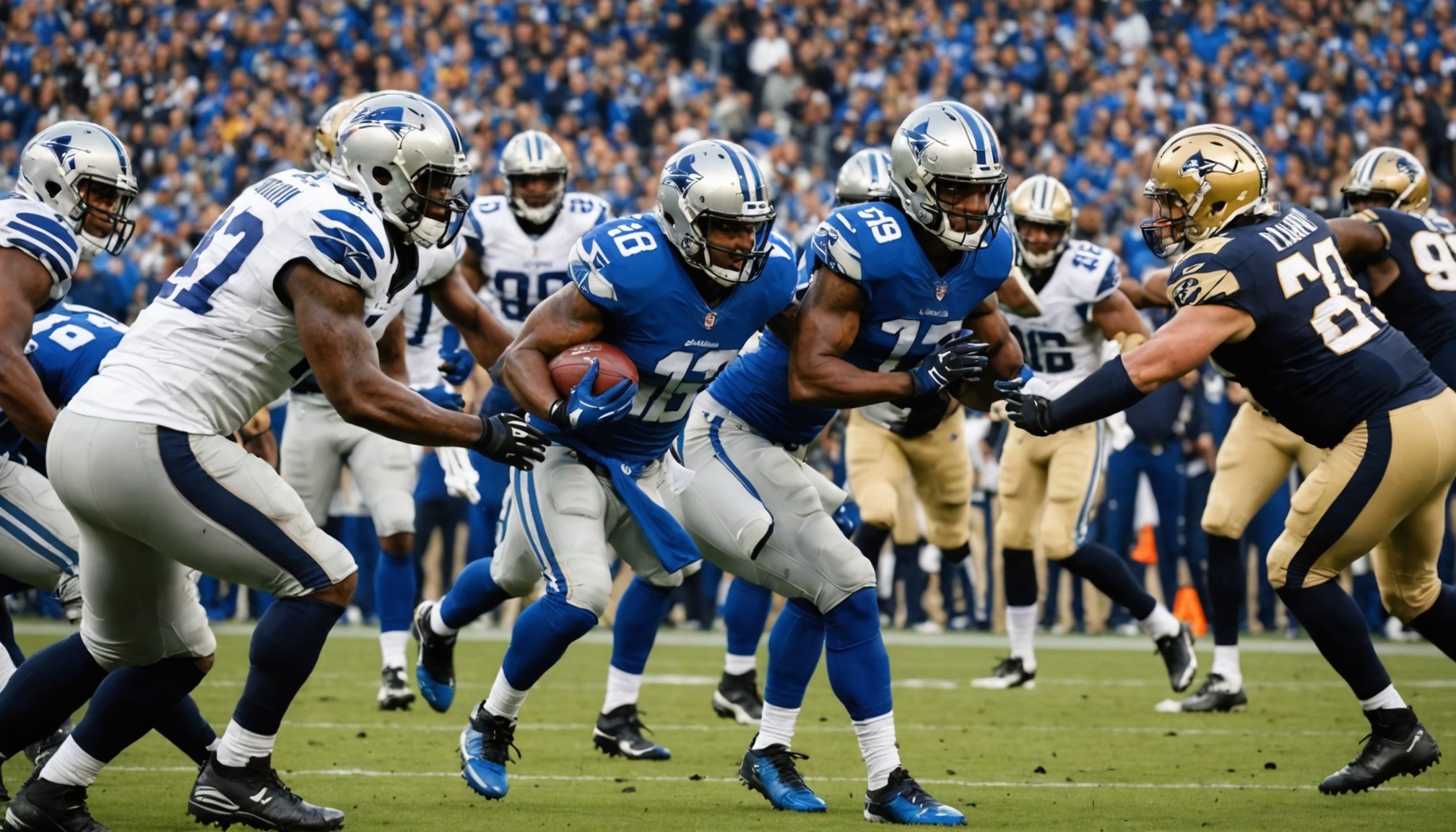Unlocking the Game Plan: Top Strategies for Analyzing Opponent Tactics Ahead of a Major Football League Match
When it comes to preparing for a major football league match, understanding your opponent’s tactics is crucial. This insight can be the difference between a victory and a defeat. Here’s a comprehensive guide on how to analyze opponent tactics effectively, using a combination of traditional methods and modern analytics.
Understanding the Opponent’s Playing Style
To begin with, it’s essential to grasp the opponent’s playing style. This involves more than just watching a few highlights; it requires a deep dive into their overall strategy.
Also read : Essential Strategies for Youth Football Coaches to Effectively Manage Overly Involved Parents
Analyzing Match Footage
One of the most effective ways to understand an opponent’s playing style is through detailed video analysis. This involves recording and reviewing matches, as well as training sessions, to identify key patterns and tactics[2].
- Player Positions and Movements: Observe how players position themselves on the field and their movements during different phases of the game. This can reveal their defensive and attacking strategies.
- Ball Possession: Analyze how the team maintains and loses possession. This can indicate their strengths in midfield and their ability to transition from defense to attack.
- Set Pieces: Study how the team handles set pieces like corners and free kicks. These can be critical scoring opportunities and often reveal a team’s tactical approach.
Statistical Analysis
Data analytics plays a vital role in modern football. By analyzing statistical data, you can gain insights into an opponent’s performance that might not be immediately apparent from watching matches.
Also read : Unlocking Potential: Top Psychological Strategies to Enhance Confidence in Struggling Football Players
- Pass Completion Rates: High pass completion rates can indicate a team’s ability to control the game and maintain possession.
- Shots on Goal: Analyze the number and quality of shots on goal to understand an opponent’s attacking potency.
- Defensive Metrics: Look at metrics like tackles won, interceptions, and clearances to assess an opponent’s defensive line.
| Metric | Team A | Team B |
|
|---------|
|
| Pass Completion Rate | 85% | 78% |
| Shots on Goal | 12 | 9 |
| Tackles Won | 25 | 20 |
| Interceptions | 15 | 10 |
| Clearances | 20 | 18 |
Identifying Strengths and Weaknesses
Understanding an opponent’s strengths and weaknesses is key to developing an effective game plan.
Strengths
- Attacking Prowess: If an opponent has a strong attacking line, identify their key players and the tactics they use to create scoring opportunities.
- For example, if a team relies heavily on counter-attacking, you might need to adjust your defensive strategy to prevent quick transitions.
- Midfield Control: Teams that dominate midfield often control the tempo of the game. Identify their midfielders and their playing styles to develop a strategy to counter them.
Weaknesses
- Defensive Vulnerabilities: Look for areas where the opponent’s defensive line is weak. This could be in set pieces, one-on-one situations, or during transitions.
- For instance, if an opponent struggles with high balls, you might focus on delivering crosses into the box.
- Injury and Suspension Impact: Consider the impact of injuries or suspensions on the opponent’s team. This can significantly alter their playing style and tactics.
Preparing Your Team
Once you have a thorough understanding of the opponent’s tactics, it’s time to prepare your team.
Tactical Adjustments
- Formation Changes: Adjust your team’s formation to counter the opponent’s strengths and exploit their weaknesses.
- For example, if the opponent uses a 4-4-2 formation, you might switch to a 3-5-2 to overload the midfield and nullify their attacking threat[4].
- Player Roles: Assign specific roles to your players based on the opponent’s tactics. This could involve marking key opponents closely or using a target man to hold up the ball.
Training Sessions
Use your training sessions to practice the tactics you plan to employ during the match.
- Interval Training: Incorporate interval training to improve your players’ fitness levels and prepare them for the high-intensity periods of the game.
- Game Scenarios: Simulate game scenarios during training to prepare your players for different situations they might face during the match.
- For example, practice defending set pieces or working on quick transitions from defense to attack.
Mental Preparation
Mental toughness is as important as physical and tactical preparation.
Visualization Techniques
- Encourage your players to use visualization techniques to prepare mentally for the game. This involves imagining different scenarios and outcomes to build confidence and focus.
- “Visualization is a powerful tool. It helps players prepare for the pressure and intensity of the game,” says a sports psychologist.
Concentration Exercises
- Incorporate exercises that improve concentration and mental toughness. This could include meditation, deep breathing, or other mindfulness techniques.
- “Mental toughness is about staying focused under pressure. It’s what separates the good players from the great ones,” notes a football manager.
Leveraging Sports Analytics
Modern football heavily relies on sports analytics to gain a competitive edge.
Data-Driven Decisions
- Use data analytics to make informed decisions about team selection, tactics, and in-game adjustments.
- For instance, machine learning algorithms can analyze vast amounts of data to predict opponent behaviors and identify patterns that might not be visible to the naked eye.
Performance Analysis
- Conduct detailed performance analysis after each match to identify areas of improvement and adjust your tactics accordingly.
- “Data analytics has revolutionized the way we prepare for matches. It gives us insights that we never had before,” says a football analyst.
Practical Insights and Actionable Advice
Here are some practical insights and actionable advice to help you unlock your opponent’s game plan:
Analyze Opponent’s Recent Matches
- Watch the opponent’s recent matches to understand their current form and any tactical changes they might have made.
- Look for patterns in their play, such as favorite formations, common set pieces, and key player roles.
Use Video Analysis Tools
- Utilize video analysis tools to break down the opponent’s game into detailed segments.
- Tools like these allow you to slow down, rewind, and analyze specific moments of the game, providing invaluable insights into the opponent’s tactics[2].
Communicate Effectively
- Ensure that your players understand the opponent’s tactics and your counter-strategies.
- Clear communication is key to executing your game plan effectively.: Preparing for Victory
Preparing for a major football league match involves a multifaceted approach that includes understanding the opponent’s playing style, identifying their strengths and weaknesses, preparing your team tactically and mentally, and leveraging sports analytics.
By following these strategies, you can unlock your opponent’s game plan and develop a winning strategy.
### Key Takeaways
- **Detailed Video Analysis**: Watch and analyze match footage and training sessions to understand the opponent's tactics.
- **Statistical Analysis**: Use data analytics to gain insights into the opponent's performance.
- **Tactical Adjustments**: Adjust your team's formation and player roles based on the opponent's strengths and weaknesses.
- **Mental Preparation**: Use visualization techniques and concentration exercises to prepare your players mentally.
- **Sports Analytics**: Leverage data-driven decisions and performance analysis to gain a competitive edge.
In the words of Pep Guardiola, “The key to success is not just in the players you have, but in how you prepare them and how you understand your opponents.” By combining traditional scouting methods with modern analytics, you can develop a comprehensive game plan that sets your team up for success.











